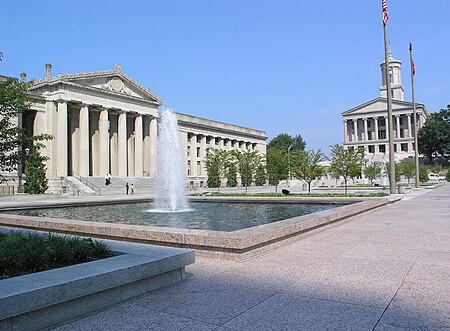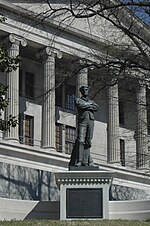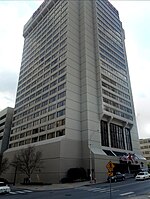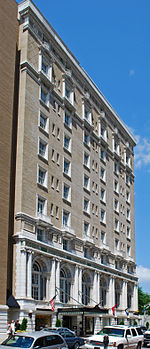War Memorial Auditorium (Nashville, Tennessee)
1925 establishments in TennesseeBuildings and structures in Nashville, TennesseeConcert halls in the United StatesGrand Ole OpryLandmarks in Tennessee ... and 3 more
Music venues in TennesseeNational Register of Historic Places in Nashville, TennesseeTourist attractions in Nashville, Tennessee

The War Memorial Auditorium is a 2,000-seat performance hall located in Nashville, Tennessee. Built in 1925, it served as home of the Grand Ole Opry between 1939 and 1943. It is also known as the War Memorial Building, the Tennessee War Memorial, or simply the War Memorial. It is located across the street from, and is governed by, the Tennessee Performing Arts Center, and is also adjacent to the Tennessee State Capitol. It received an architectural award at the time of its construction, and was listed on the National Register of Historic Places in 2017.
Excerpt from the Wikipedia article War Memorial Auditorium (Nashville, Tennessee) (License: CC BY-SA 3.0, Authors, Images).War Memorial Auditorium (Nashville, Tennessee)
7th Avenue North, Nashville-Davidson
Geographical coordinates (GPS) Address External links Nearby Places Show on map
Geographical coordinates (GPS)
| Latitude | Longitude |
|---|---|
| N 36.1644 ° | E -86.7837 ° |
Address
War Memorial Auditorium
7th Avenue North
37203 Nashville-Davidson
Tennessee, United States
Open on Google Maps









